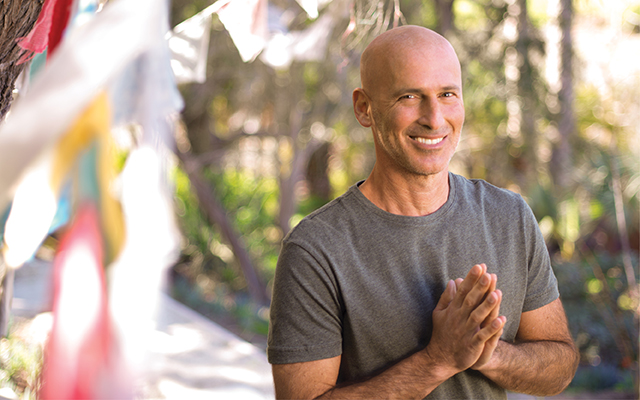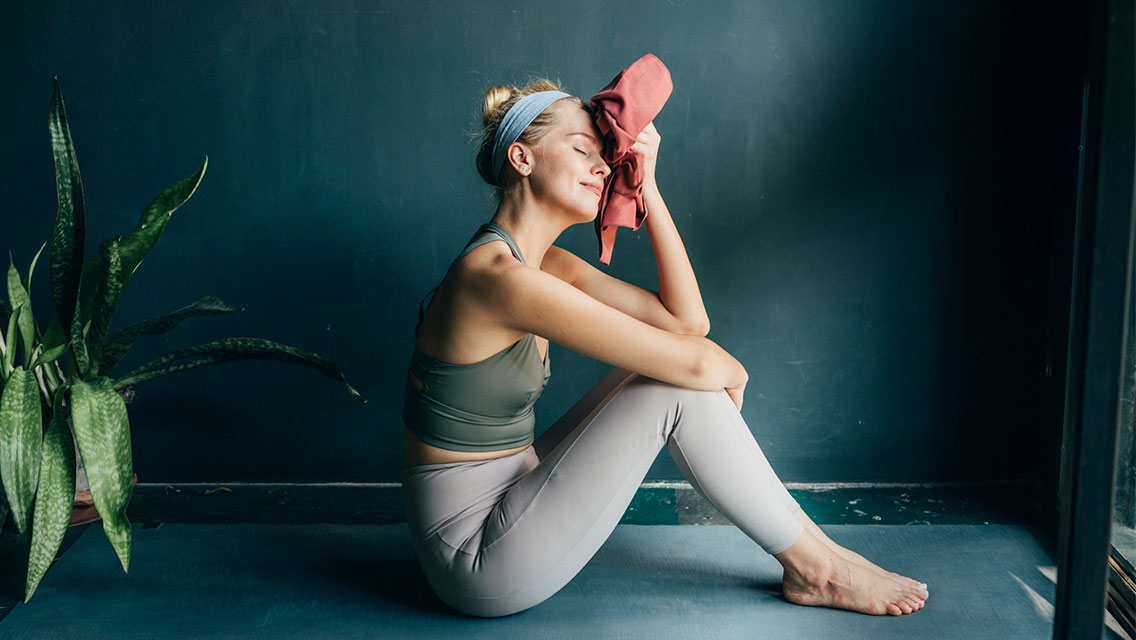Jonny Kest was just 12 years old when he first observed the healing power of yoga. That’s when his father, a surgeon who suffered from debilitating back pain, attended a workshop led by Sri K. Pattabhi Jois, the founder of Ashtanga yoga. Kest’s father was so impressed with the benefits of that session that, three years later, he took Jonny to India to study with Jois. When he returned to high school, Kest began leading weekly yoga sessions in his gym class.
He has been teaching yoga ever since.
In 1993 he and his wife, Milla, founded the Center for Yoga in Detroit, helping establish the Motor City as one of the Midwest’s largest yoga communities.
“I love teaching yoga, but my real passion is teaching people to teach yoga,” Kest says. So it was a natural fit when Life Time tapped him in 2011 to head its LifePower Yoga Teacher Training program. “My goal isn’t simply to relay the art of teaching yoga, but the art of living yoga.
“Michelangelo always said that the figurine he sculpted was already there [in the block of marble] and that he just used a hammer and chisel to uncover it,” says Kest. “Like that hammer and chisel, your breath and yoga’s poses are tools for uncovering the true beauty you already have.”
Like Michelangelo, Kest has mastered his art more than most. “Intentionally placing myself in uncomfortable postures and learning to relax helps me more easily cope with stresses associated with all sorts of discomfort that arise in everyday life,” he says.
Today, Kest is intent on helping others discover how yoga can transform their lives, too — both on and off the mat.
Q&A With Jonny Kest
Experience Life | You’ve said that yoga is about relationships. What do you mean by that?
Jonny Kest | The word “yoga” comes from the Sanskrit root word meaning “to yoke or to come together.” When you understand that it means union, you see that practicing yoga teaches you how to be in a relationship and come out of it successful. The ultimate relationship is the one between your own body and mind.
Every relationship is a reflection of that, so when you are in mind–body harmony, it reflects on all your other relationships — with food, family, nature, friends, and the universe.
EL | What kinds of transformations have you seen in people who practice yoga?
JK | There have been so many! I remember one student, for instance, who came for his first-ever class and bounced in and out of every pose. I was surprised to see him the next day. He explained that after that first class he was able to sleep through the night for the first time in a decade — a painful injury had been waking him up. He believed that consciously breathing in and out during the struggle of staying in the yoga poses helped him break old patterns of tension that were keeping him from a restful sleep.
For people who have experienced trauma, yoga is a method for restoring balance between body, mind, and spirit. Yoga’s about practicing equanimity, or nonreactivity. Since trauma survivors are often easily triggered, yoga offers a gentle way — using breath and sensations — to touch all parts of the body that may have been wounded and reconnect them with a calm mind.
Finally, many people have transformative spiritual-healing experiences. After spending time paying attention to their breath and posture, many students begin to let go of a lifetime of grudges and pain. They have epiphanies that holding on to those negative past experiences causes their own suffering. People have incredible insights of forgiveness that happen just by paying attention to their own flow of bodily respiration and sensations.
EL | What is the biggest lesson you’ve learned from yoga?
JK | An important lesson that I wish we’d all learn sooner is that life is impermanent. In yoga, you find that most sensations pass quickly if you don’t react to them.
You can take this teaching with you off the mat. For example, if you have a craving for chocolate cake, you can observe it for a while, and you’ll likely see it doesn’t last very long. By not reacting immediately to every sensation or craving, you slow down and give yourself space to ask if giving in to a feeling or craving is worth compromising your integrity.
The same thing happens with our fears and negativity. Often, when we get scared or anxious, we lash out, thinking it will help the feeling go away. This tends to result in hurting others or ourselves. Practicing yoga helps us more easily sit with our fear and shows us how quickly it actually dissolves if we don’t react.
EL | What’s one simple yogic practice that people can do off the mat?
JK | Breathing with intention. Exercises like the pranayama practice in which you take 30 or 40 quick fire breaths and then hold your breath for a minute or more work well because there is no greater, more powerful healing mechanism in your body than your respiratory system.
That’s why a yoga class is actually a breathing class first and everything else is secondary. Even if you just lie on your mat and only take slow, deep breaths, you will leave feeling changed.
Yoga works because everybody breathes. There’s not a Jewish breath, Christian breath, or Muslim breath. There’s not a rich breath or a poor breath. Everybody breathes, so it’s a beautiful, universal experience that we all share.
EL | You talk a lot about the universal and community-building aspects of yoga. How else does it help us connect to one another?
JK | It feels like we’re losing intimacy in our culture, especially in America. Families no longer eat dinner together. Divorce rates are high. There are fewer places — like bookstores and video stores — for meeting or just running into your neighbors. A yoga class is a gathering place where people come together once a week or once a month and build a rapport.
When I attended an elder ceremony in Tulum, Mexico, I learned that the Mayans believe you need three things to create community: song, dance, and storytelling. Later, I thought, Wow, this is what we experience in our yoga classes! Breath is our song, poses link together in a flow that is our dance, and we always share healing stories. It helps people relate to one another and creates common ground.
EL | Besides yoga, what are your other foundational healthy-living practices?
JK | I practice sitting meditation, which I consider one of the highest forms of yoga, because eventually, if you practice yoga long enough, you move into stillness.
My family and I take lots of walks and hikes and cele-brate summer and winter solstices. Connecting with the elements is important because it connects us with planetary rhythms.
Every night we have a gratitude circle where we share not just what we’re grateful for, but what we’re grateful for that someone else has achieved. This is called sympathetic joy. We can all benefit from learning to be more grateful for and sharing in each other’s successes.




This Post Has 0 Comments